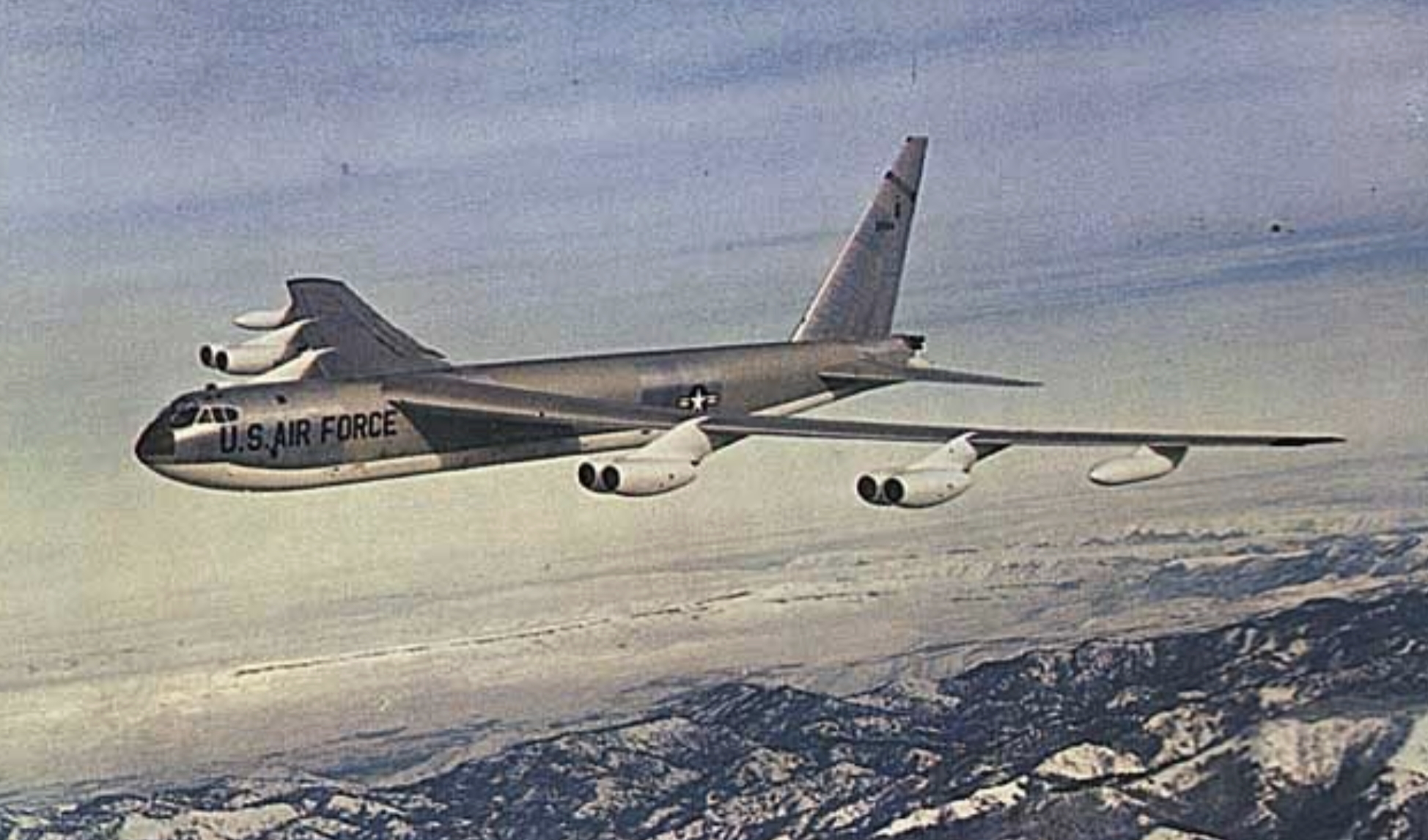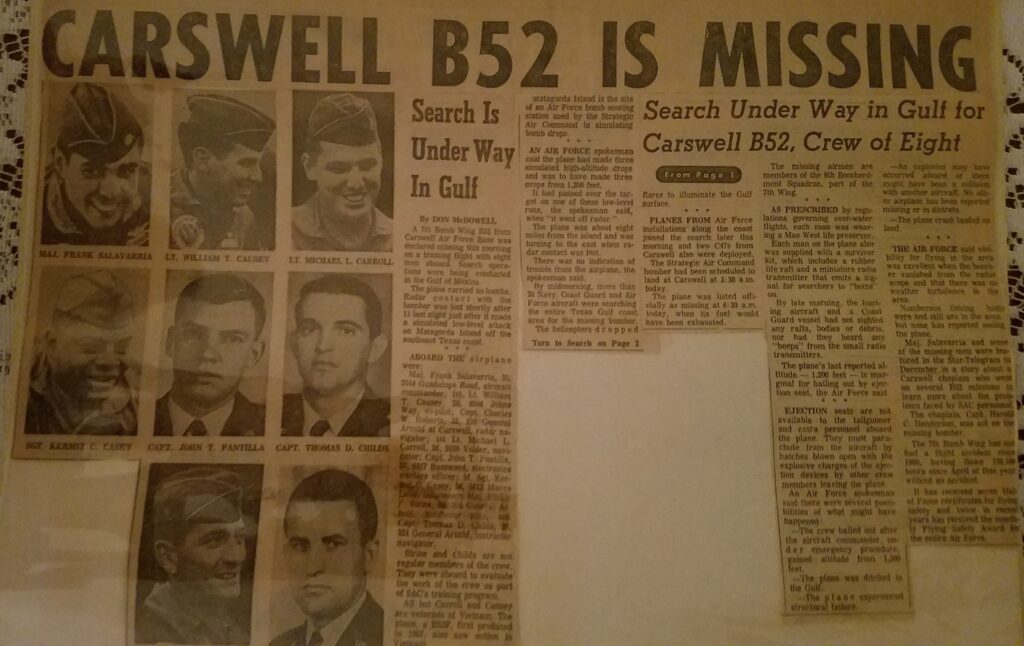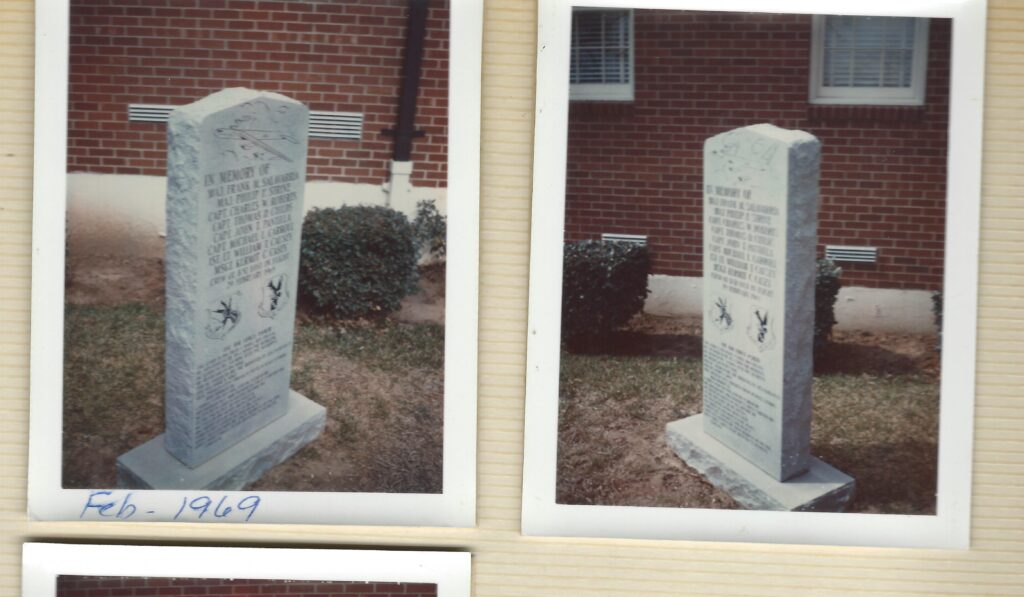
Late on the evening of February 28, 1968, a B-52 bomber carrying eight members of the U.S. Air Force crashed while on a training flight near Matagorda Island, Texas. There was no distress call, and no members of the crew ejected from the eight-engine, jet-powered bomber before it disappeared beneath the waves of the Gulf of Mexico.

After searching for two weeks, the Department of Defense gave up and declared the eight men dead. An investigation into the cause of the crash was inconclusive, and the Air Force moved on. This was the era of the Vietnam War, and of the Cold War, when some B-52 crews took part in dropping conventional bombs in Southeast Asia, and others stood by at a moment’s notice to run from their barracks, ready their aircraft, and get airborne within 12 minutes carrying a payload of nuclear bombs.

The crew of the B-52F Stratofortress – tail number 70173, employing the tactical call-sign Meal 88 – was being evaluated during the training flight for accuracy in both low-level and high-altitude bombing.
Along with the regular crew of six – Frank Mariano Salavarria, Major, US Air Force: B-52 Combat Crew Aircraft Commander (AC) and Instructor Pilot (IP); Charles Webb Roberts, Captain, US Air Force: B-52 Combat Crew Radar Navigator (RN); John Thomas Pantilla, Captain, US Air Force: B-52 Combat Crew Electronic Warfare Officer (EWO); Michael Lee Carroll, Captain, US Air Force: B-52 Combat Crew Navigator (NN); William Thomas Causey, First Lieutenant, US Air Force: B-52 Combat Crew Copilot (CP); and Kermit Crawford Casey, Master Sergeant, US Air Force: B-52F Combat Crew Defensive Aerial Gunner (AG) – were two evaluators: Philip Franklin Strine, Major, US Air Force: B-52 Combat Crew Aircraft Commander (AC) and Evaluator/Instructor Pilot (EP/IP); and Thomas D. Childs, Captain, US Air Force: B-52 Combat Crew Radar Navigator (RN) and Evaluator/Instructor Navigator (EN/IN).

In the years and decades following the disappearance, Meal 88 and all of the men aboard were essentially forgotten by the Air Force and by the community around Carswell Air Force Base, which the aircraft and crew had called home. Were it not for the end of the Cold War and the closure of Carswell, a monument to the men might have remained covered with vegetation, and the lost bomber would likely have remained forgotten or lost in obscurity.
Cliff Sjolund, Jr. is a retired U.S. Air Force pilot who flew B-52s from 1977 to 2000. It was his discovery of the monument in 1993 that led him to investigate the crash, to track down the family members of the missing men, and, ultimately, to launch a mission that may discover the whereabouts of the lost bomber as soon as later in 2025. Sjolund and his crew, in partnership with Project Recover, are currently securing the financial support necessary to fund the search.

The story explored in Unsolved Histories: Bomber Down is about what happened to the B-52, and about Cliff Sjolund’s mission to find the aircraft. But it’s also about the bonds between those who serve in the military and the families of those who serve. These bonds are strong, even between service members who have never met each other, or between service members and the families of others who served, but who were lost decades ago.
To contribute to the effort to search for MEAL-88, please visit the dedicated section of the project website.